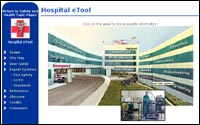 |
Safety and Health Topics |
|
| Ethylene Oxide |
|
|
|
 |
In
Focus |
 |
|
|
Ethylene oxide (EtO) is
produced in large volumes and is primarily used as an intermediate in the production
of several industrial chemicals, the most notable of which is ethylene glycol.
It is also used as a fumigant in certain agricultural products and as a sterilant
for medical equipment and supplies. Unfortunately, EtO possesses several physical
and health hazards that merit special attention. EtO is both flammable and highly
reactive. Acute exposures to EtO gas may result in respiratory irritation and
lung injury, headache, nausea, vomiting, diarrhea, shortness of breath, and cyanosis.
Chronic exposure has been associated with the occurrence of cancer, reproductive
effects, mutagenic changes, neurotoxicity, and sensitization.
The following questions
link to information relevant to ethylene
oxide.
|

|
What OSHA standards
apply?
Standards | Standard Interpretations |
 |
How do I recognize and evaluate exposure to ethylene oxide?
Exposure Evaluation | Sampling Methods |
 |
How can exposure to ethylene oxide be controlled or prevented?
|
 |
What additional information is available?
Related Safety and Health Topics Pages | Other Resources |
 |
In Focus |
 |
 |
Hot Topics
- OSHA's Small Business Guide for Ethylene Oxide. OSHA Publication 3359, (2009, April), 14 MB PDF, 87 pages. Provides guidance to help employers understand the EtO standard, with particular emphasis on how to monitor the quality of the air in workplaces where EtO is processed, used, or handled. Air monitoring is an important activity that can help alert employers when unsafe levels of EtO are present in the air so they can take steps to reduce employee exposure.
eTools
- Hospital. OSHA. Focuses on some of the hazards
and controls found in the hospital setting and describes standard requirements
as well as recommended safe work practices for employee safety and health.
- Central
Supply Module. Provides information
on hazards and methods of exposure prevention regarding ethylene oxide
gas.
|
|
|
|
|
|
|
